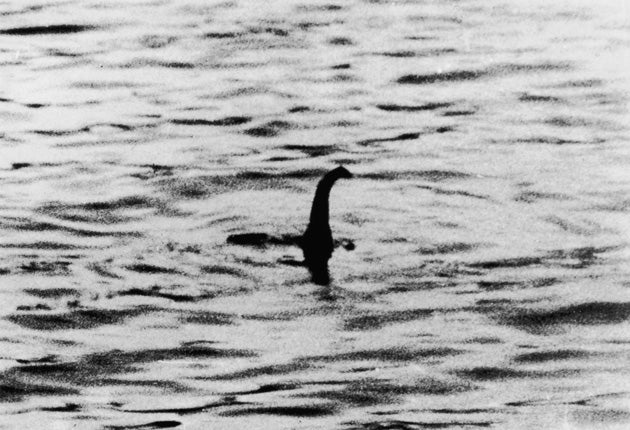Even police believed Loch Ness monster existed in the 1930s

From his office behind the sandstone ramparts of Inverness Castle, William Fraser could gaze down on the bubbling waters of the River Ness as it made its way to the Moray Firth.
But the view gave him little solace. For in 1938, Mr Fraser, the new chief constable of Inverness-shire, had a monster of a problem on his hands, and it lurked somewhere in the murky depths at the other end of that seemingly tranquil waterway.
Ever since the A82 along the northern shore of Loch Ness had been upgraded five years earlier, there had been sightings of what appeared to be a large aquatic creature. In April 1934, a photograph purportedly taken by a respected London surgeon, Colonel Robert Wilson, seemed to confirm the reports in newspapers not just in Britain but all over the world. Yet far from rejecting the sightings as a hoax, Mr Fraser was convinced the Loch Ness monster was real.
A secret letter contained in the Government's declassified "Nessie Files", which are currently on show at the National Archives of Scotland in Edinburgh, reveals the surprising scale of official acceptance of the beast's existence, and the authorities' determination to protect it.
In the letter, written in August 1938 to the Under-Secretary of State in the Scottish Office, Mr Fraser revealed his strong desire to safeguard Nessie from the steady stream of trophy merchants and glory-seekers heading his way, and urged the minister to ensure the "preservation of the monster".
Mr Fraser, who led the force until 1951, described a London couple, Peter Kent and Marion Stirling, who were "determined to catch the monster dead or alive". They planned to have a "special harpoon gun" made and intended to return with "20 experienced men" the following week "for the purpose of hunting the monster down".
Mr Fraser said: "That there is some strange fish creature in Loch Ness seems now beyond doubt, but that the police have any power to protect it is very doubtful. I have, however, caused Mr Peter Kent to be warned of the desirability of having the creature left alone, but whether my warning will have the desired effect or not remains to be seen."
A spokesman for the archives said others were less convinced. "It's certainly remarkable that a senior police officer was prepared to accept the existence of 'a strange fish' or rather 'creature'. The file shows that other senior officials were more sceptical, and certainly more cautious in expressing their views," he added.
But Adrian Shine, a naturalist who founded the Loch Ness and Morar Project to conduct research into the existence of the monster, believes Mr Fraser was not alone in his views. He said: "When the first stories began to burgeon from Loch Ness in the summer of 1933, people in fairly high and respectable positions were quite properly and respectably interested to see what was happening and wanted to investigate and protect whatever was there if necessary."
Mr Shine said it was possible that the beast was a species of migratory sturgeon. Another theory behind the more than 1,000 sightings is that the unique environment of Loch Ness creates optical illusions.
The surgeon's photo was revealed as a hoax only in 1994. Since then, scientists, academics and hunters have deployed techniques from sonar to hydrophones to underwater cameras in an attempt to locate the monster, but the loch stubbornly refuses to yield its secret.
"People still come and they still see. We have to accept that we don't have all the answers," said Mr Shine.
Join our commenting forum
Join thought-provoking conversations, follow other Independent readers and see their replies
Comments